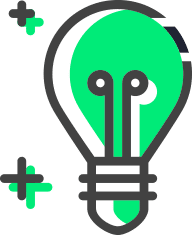WHAT IS DATA FABRIC?
Data fabric is an architectural approach to data management and integration that emphasises the interconnectedness, flexibility, and agility of data across distributed and heterogeneous environments. The term ‘fabric’ is often used metaphorically to convey the idea of weaving together disparate data sources and technologies into a seamless, unified whole. Data sources can include SAP or Oracle, as well as cloud environments, such as Azure, AWS, Google Cloud, or Snowflake. Newer cloud-based technologies such as serverless computing and containers with Kubernetes or Docker can also be used in a data fabric.
A data fabric helps maximise the value of data and drive digital transformation. Data and applications from all sources can be continuously monitored and managed – regardless of where they are stored. This unites different in-house systems and processes and integrates external partner companies and third parties into existing process structures. Integrations in complex constructs can be configured using automatically generated API documentation so data can be exchanged more quickly and easily between different systems.
HOW DOES DATA FABRIC WORK?
A Data fabric can be thought of as a comprehensive concept for machine-based connections that allow everyone to communicate. It provides tools and technologies for data ingestion, transformation, and synchronisation, allowing companies to combine and analyse data from multiple sources to gain insights and make data-driven decisions. So, not unlike the Babblefish in “The Hitchhiker’s Guide to the Galaxy”, it enables users to understand a variety of communication channels and data formats instantly. A data fabric is therefore a holistic solution that encompasses all applications and components in a company to deliver a high level of transparency across all processes and data flows.
A data fabric can also use ready-made connectors to link up with almost any data source without having to program the interface. It also comes with a wide range of features for data preparation and data governance and can be deployed in various ways, including on-premise, hybrid, or multi-cloud.
In this context, integrating IT and devices also plays an important role. It is often not possible to link edge computing data with in-house controlling and monitoring systems (IT). A data fabric can connect these devices and systems, regardless of formats, so all systems can exchange data. The application possibilities are manifold. But it all comes down to connecting thousands of devices, communicating with them, and securely disseminating the collected data in the required format to any target system.
Advantages of a data fabric for companies
Using a data fabric can be economically beneficial, as enhanced services harness efficiencies that can strengthen customer loyalty and minimise sudden risks. Data transparency is vital in this regard as it facilitates data management and makes it easier to protect confidential information. Data transparency goes hand in hand with cost transparency, ensuring expenditure aligns with forecasts.
Technical possibilities also make businesses less dependent on legacy infrastructures, guaranteeing maximum flexibility in the choice of IT solutions. Having a data fabric is, therefore, a future-proof business model, as innovative data sources, endpoints, and technologies can be integrated with minimal effort alongside existing systems.
Unified View of Data: Data fabrics integrate data from various sources across the organisation, providing a unified view. This ensures decision-makers have access to comprehensive and consistent data, leading to better insights, time savings and informed decision-making.
Improved data quality and accessibility: Consolidating data sources improves data quality and accessibility. Data fabric systems provide advanced data cleansing and validation mechanisms, resulting in more reliable data for business-critical decisions.
Increased business agility: A data fabric architecture integrates new data sources quickly so data can be utilised more efficiently. This leads to increased agility in a constantly changing business environment.
Scalability and future-proofing: A data fabric architecture is scalable and can match a company’s needs. It can manage smaller or larger volumes of data and adapt to new technologies and requirements, ensuring that the data architecture remains future-proof.
Cost efficiency: Optimised data processes and reduced redundancies reduce costs. The data fabric reduces the need for manual intervention and enables more efficient resource use.
Improved analytics and insights: A centralised, high-quality data source allows for deeper insights, making it easier to analyse and identify patterns in the data for better business decisions.
Data security and compliance: Data fabric systems offer robust security features essential to combat today’s increasingly volatile cyberattack environment.<7p>
Automation and increased efficiency: Automating routine data processes can make organisations more efficient, allowing employees to focus on more critical tasks.
Overall, a data fabric architecture offers a comprehensive solution for utilising your data more effectively while mastering modern data management challenges.
Core components of a data fabric architecture
1 Data integration and orchestration
Integrating data from different sources – traditional databases, data warehouses, data lakes, and IoT devices – is central to the data fabric architecture. Orchestration ensures that this data flows together seamlessly and is managed efficiently.
2 Metadata management
Metadata is the backbone of any data fabric architecture, as it contains all the essential key data of a file. Metadata allows you to catalogue and classify all data sources and understand their relationships to each other without knowing the content of a particular file. Advanced metadata management facilitates the search, analysis and governance of data.
3 Data governance and security
At a time when data protection and security are top priorities, having a robust governance and security structure is essential. A data fabric can facilitate compliance with data protection guidelines while ensuring secure access to data.
4 Artificial intelligence and machine learning
AI and ML have become indispensable for analysing and processing large amounts of data. In a data fabric architecture, they can automate processes, predict trends, and uncover insights that would otherwise remain hidden.
5 Self-service data access
Self-service access to data is an essential tool for data democratisation in companies. End users can find and use the information they need quickly and easily without relying on a specialist department’s technical expertise.
6 Support for hybrid or multi-cloud environments
A data fabric is not limited to a single environment. Support for hybrid and multi-cloud environments is necessary to ensure flexibility and scalability and meet organisations’ different requirements. These components are at the heart of a data fabric architecture and enable organisations to transform their data landscape. Linking data sources, advanced metadata management, and integrating AI and ML create a dynamic environment that significantly simplifies data access and analyses.
Pain points without a data fabric system
Inconsistent, heterogeneous infrastructures
Using a data fabric architecture ensures consistency across integrated environments due to optimised data management. Data can be accessed regardless of location, enabling transparent analyses and effective decision-making based on meaningful insights.
Tedious manual management
With a data fabric, all manner of processes can be automated. This keeps time-consuming manual processes to a minimum so all parties can implement optimisations quickly and transparently.
Insufficient data quality
The data fabric approach standardises data management and improves data quality, essential for analyses. At the same time, the concept optimises data integration, data governance, data sharing and data exchange within a company.
Lack of scalability
A data fabric architecture is innately scalable, making it easier to manage rapidly growing data volumes, heterogeneous data sources and multiple applications. A data fabric shares relevant information with third-party data systems – like exchanging data between a company’s logistics department and a logistics service provider. The seamless connection facilitates collaboration, as both sides can send and receive important information using the respective software application.
Unutilised evaluation of data
Companies need to get the most out of their data if they want to harness cost efficiencies. A data fabric facilitates targeted data analysis so business models can be adapted to market requirements or potential operational efficiencies can be identified. Thanks to improved technology and transparent pricing for cloud services, data is no longer tied to local data centres but can be externalised to save resources.
Challenges and best practices when implementing a data fabric
Introducing a data fabric system harbours specific challenges that need to be overcome. One of the main problems is the integration of heterogeneous data sources. Companies often have a variety of data in different formats and systems. Harmonising it to create a uniform data fabric architecture requires careful planning and technical expertise. Another obstacle is ensuring data quality. Inadequate data quality can significantly impair the effectiveness of the data fabric architecture. It is therefore necessary to implement data cleansing and validation mechanisms to ensure consistent and reliable data. System scalability is another challenge. As the organisation grows, data fabric solutions must be flexible enough to adapt to increasing data volumes and changing business requirements.
Best practices for a successful implementation
- Thorough needs analysis: understand your organisation’s specific data requirements. Identify which data sources need to be integrated and which business processes need support.
- Select the right technology: choose a data fabric solution compatible with your current IT infrastructure and can fulfil future requirements.
- Gradual implementation: start with a pilot project to test feasibility. Expand the system gradually to minimise risks and maximise learning effects.
- Focus on data management and governance: establish clear data access, security and quality guidelines. This ensures data is consistent and trustworthy across the organisation.
- Employee training and change management: prepare your employees for the new processes and tools. Comprehensive training and ongoing support are essential for successfully introducing the new system.
- Agile methodology: use agile development practices to react flexibly to changes and continuously improve the system.
- Partner with experts: bring in external consultants to benefit from their experience and expertise where necessary.
By following these best practices, companies can successfully overcome the challenges of implementing data fabric systems and build a robust, flexible data infrastructure that enables efficient data integration and utilisation.
Where does Lobster come in?
Lobster_data is a data integration solution for efficiently mapping all your data fabric processes, such as EAI, EDI, ETL/ELT, MFT, Industry 4.0 & IoT strategies. It encourages as many people as possible in the company to participate, thanks to its no-code design that requires no coding or scripting knowledge. It uses an intuitive HTML5 interface with ready-made function modules that include all common industry standards. Learn to use the software independently in just two days of training. Lobster_data also ensures the secure integration of all data and applications and can continuously adapt to the ongoing expansion of a data fabric architecture. The advantages of Lobster_data include:
High connectivity
Lobster_data works with all standard formats, systems and applications. As a platform solution, the software links internal systems (EAI), external systems (EDI), cloud systems (APIs/hybrid integration), things (IoT), and machines (Industry 4.0). It enables the transformation of big data from various data sources (ETL/ELT).
Networked data management
Lobster_data connects technology and people in the data fabric, e.g., through the availability and transfer of data in real time and operational decisions thanks to data analysis or insights from intelligent algorithms to support business-relevant processes.
your free EDI guide.
160 pages of EDI knowledge. For all. From non-IT people to integration professionals.

Standardised environment
Lobster_data manages the standardised integration of data and processes from various sources and eliminates the need to use/purchase additional data integration products. The software helps create a homogeneous environment and seamlessly exchange data between all stakeholders within the data fabric.
Available on-premise or in the cloud
Lobster_data can import and integrate data from on-premise back-office environments such as Oracle and SAP and cloud environments such as AWS, Azure, and Google Cloud. The software is based on the latest Java technology and can run on any system with a JDK. This guarantees the easy use of containers with Docker and Kubernetes or serverless computing, for example.
Highest data quality
With Lobster_data, high data quality is integrated into every step of data management, regardless of whether data is being identified and read in or the origin of the data needs to be tracked. Lobster_data is also easy to use for non-IT teams, preventing errors due to incorrect entries or unsafe software handling. This self-service data management ensures data quality and democratises access to data.
Get in touch and arrange a no-obligation chat with one of our data integration specialists today. We can’t wait to show you how easy it is to implement and manage a data fabric architecture.













